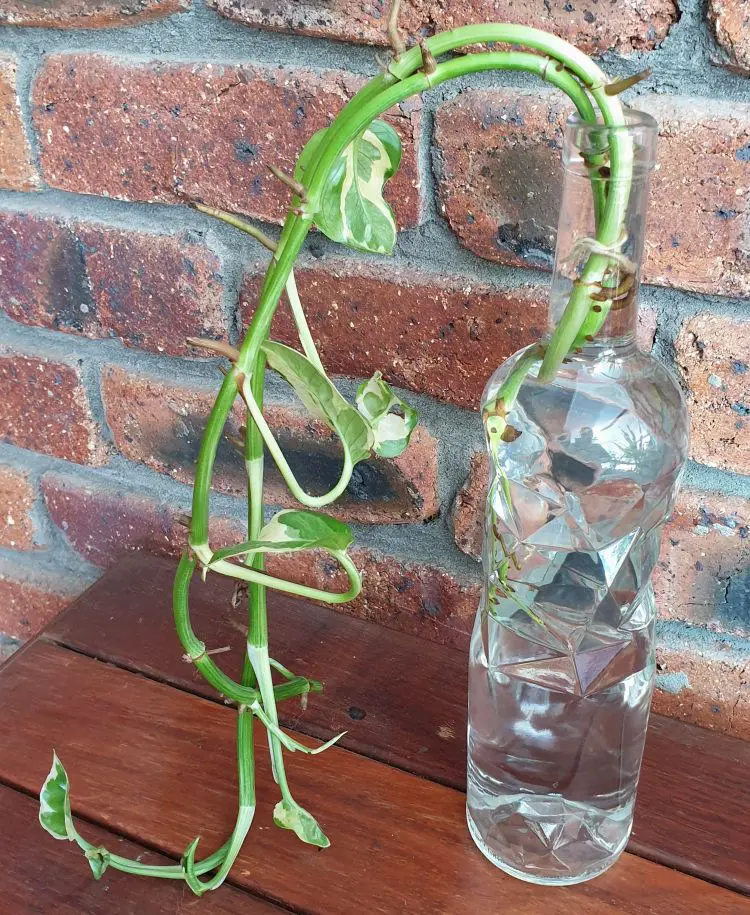Growing new plants from cuttings is a great way to increase your plant collection and save money at the same time. You can get multiples of your favourite plants and they’re almost guaranteed to thrive. Growing new plants from cuttings is a great way to increase your plant collection and save money at the same time.
Cuttings can be grown in a variety of mediums, which are often used in combination. These include perlite, vermiculite, compost, coconut coir, potting mix and sand. But growing your cuttings in water is the easiest way, and is a great place to start. Whether you’re a beginner or an expert, using plain old water is easier and cheaper. Plus, you’ll be able to see the root growth, rather than having it hidden under the soils surface.

Water propagation requires no special equipment- you only need a container and plain tap water. Using water rather than soil is less messy, and easy to do indoors. Turn your cuttings into attractive ornaments by using unusual bottles or containers, as shown above.
Which Plants Suit Water Propagation?
The best plants for propagating in water are those which have a high water content themselves. These are called soft-stemmed plants, and include ornamentals like pothos, coleus and geraniums. Many vegetables, herbs and succulents can also be propagated this way.
Perennial plants are grown from cuttings more often than annuals, due to their longer life cycles. They’re also the most expensive to buy whole. Selected annuals such as geraniums or basil can be propagated in autumn and overwintered to provide new plants ready for early planting in spring.
Whichever kind of plant you choose, it must be one that produces root nodes on its stems or vines. These are the small buds or lumps on the stem, and are the parts of the plant which can sprout new roots.
How to Propagate Plants in Water
There are three easy steps in the propagating process. Depending on the plant, conditions, and time of year, you should have a new potted plant with established roots in around three months.

1) Take the Cuttings
You can take cuttings at any time of the year, although growth will be slower in cool weather.
First, choose a healthy, vigorous parent plant that’s growing well, preferably one that needs pruning. Find a healthy stem that has root nodes, and using a clean, sharp pair of scissors or secateurs, cut through the stem just below the node. Make sure there are several healthy leaves above the cut, and depending on the plant, the stem should be around 5-10cm long.
It’s important to have clean scissors or secateurs when taking a cutting. Any pathogens lurking on your tools can quickly harm the plant, as they’ll have immediate access to the soft tissue when you cut the stem. A simple wipe-over with rubbing alcohol or methylated spirits will ensure that your equipment isn’t spreading disease throughout your garden.

2) Wait for Roots to Develop
Place your fresh cutting in a clear container filled with room-temperature water, with the root nodes fully submerged. Remove most of the leaves, but leave 3 or 4 at the top. This is so the plant has energy while the roots are growing.
Place the container in a warm spot that’s well-lit but out of the direct sun. Keep an eye on the water, and top up if necessary, as you need to keep the root nodes under water. Replace the water at least once a week, or more often if it starts to discolour. Adding a touch of activated charcoal to the water can help reduce bacteria buildup and keep the water fresh for longer.
You’ll likely see new roots emerging within a month to six weeks, but don’t panic if it takes longer – three months isn’t unusual depending on the plant and the time of year. Just keep checking the water levels until either roots appear or it’s clear that the stem has died and you’ll need to try again.
3) Transplant
Cuttings can be planted into small pots when the roots are about 3cm (1″) long.
Be sure to hold the plant by its stem or leaves, as the small roots are still delicate at this stage. Use good quality potting mix and water the plant well. Use watering to settle the soil rather than your fingers: pressing it down can compact it.
Once potted, keep the cutting in the shade for a few days to let the plant adapt & to minimise transplant shock. If you have a cold winter or a hot summer at the time of transplant, it’s a good idea to gradually introduce them to the outdoors over a few days so they aren’t shocked or scorched by the conditions outside.

You can see now how easy it is to grow a plant from a cutting! Sure, propagating your favourite plants takes a bit longer than a trip to a big box store. But it’s fun to do, inexpensive, and you’ll gain plenty of healthy new plants that are a proven fit for your areas’ growing conditions.













